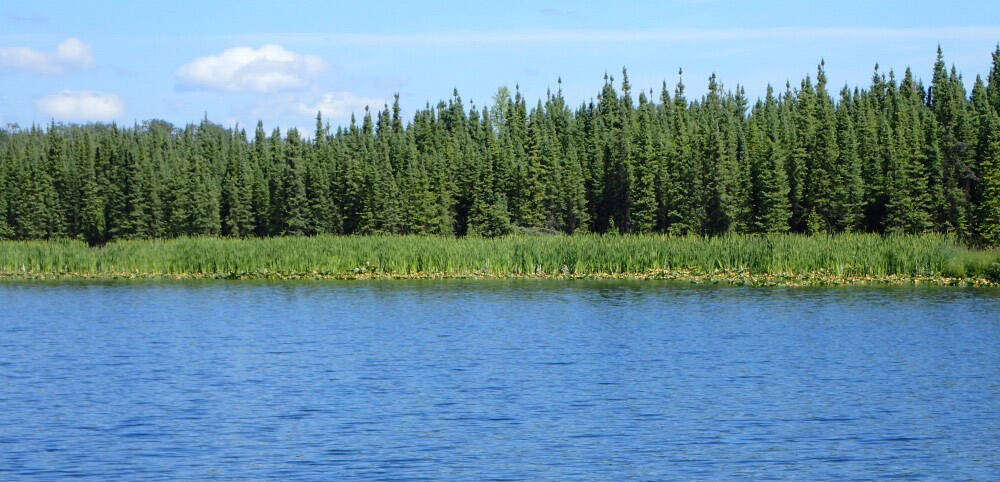I like cattails. They remind me of Florida, where largemouth bass and red-winged blackbirds lived around the patch of cattails on the lake where I grew up and where I had harvested cattails for food.
However, I do not associate cattails with the Kenai, where, until recently, I had only seen them where others had intentionally transplanted them.
Like northern pike, ruffed grouse and tamarack trees, broadleaf cattails (Typha latifolia) naturally occur in Interior Alaska. Whether or not they are native to Southcentral Alaska is unclear. What is clear is that cattails are spreading in Southcentral Alaska now.
So, it is time to ask whether we should oppose this change or step back and let it happen? To make an informed decision here, I looked for answers to two questions: First, are cattails native to Southcentral Alaska? Second, if they are allowed to increase here, how do we expect things to change?
I sought information on the origin of cattails in Southcentral Alaska and found that they have been here for at least 70 years. I spoke with an old-timer who recalls encountering small numbers of cattails while he was duck hunting on the Susitna Flats in the 1950s.
He added that there are many more cattails there now. Unfortunately, the oldest literature record I could find that documented cattails in Southcentral Alaska was published in 1968.
Detailed surveys of plants of Potter Marsh, an artificial wetland along the Seward Highway near Anchorage, reported no cattails in the 1970s.
I found in another report that cattails were intentionally being moved around the Anchorage area in the 1990s in constructed wetland projects. Today Potter Marsh is noteworthy for its dense cattails.
The oldest record I found on the Kenai Peninsula was a fishery survey that reported cattails on Clam Lake in 1985. At that time, the dominant vegetation was yellow pond-lilies, bulrushes and pondweeds. We revisited Clam Lake this year and found it rimmed with dense stands of cattails.
People intentionally moved at least some of the cattails in our region. For example, in 1989, thousands of cattail plants were imported from Montana to Talkeetna as part of a wastewater treatment project.
Locally, cattails were transplanted into the Swanson River oil field (where they were subsequently removed), stormwater treatment ponds in Soldotna and Timberlost Lake in Nikiski.
Perhaps the best evidence that cattails have not been on the Kenai Peninsula for long is that they grow and reproduce rapidly where they were introduced. If cattails had been here for a long time, we would expect they would have already occupied many of the wetlands where they can grow, but this is not what we see.
In two recently discovered patches of cattails on the Kenai National Wildlife Refuge, they are expanding rapidly. Here we saw very few old, decomposing cattail parts, indicating that the cattails had arrived recently.
Taking all of this together, I cannot rule out that cattails might have been present in Southcentral Alaska before people started moving them around. Still, I can say at the least that people have been helping them to expand their range in recent decades.
The second question about how cattails might change things on the Kenai is easier to answer because this species is well studied. Cattails should flourish most in nutrient-rich lakes, ponds and wetlands. They should not be as competitive as native plants in nutrient-poor peatlands.
Cattails excel at accumulating carbon and nutrients. This role is beneficial if the goal is to pull carbon out of the atmosphere, but it comes at the cost of more quickly filling in open water in wetlands.
There will be winners and losers among our native animals and plants. The biggest losers will likely be bulrushes, plants that grow in the same places as cattails. Cattails may partly displace bulrushes along pond and lake margins.
Multiple bird species nest in the structure provided by cattails, but for most of these birds, bulrushes provide ideal habitat. Ducks and other waterfowl eat bulrush seeds, so increasing cattails may reduce the food available to them.
The biggest winners may be muskrats, which eat cattails and use them to build their lodges. Moose sometimes eat cattails.
Because we believed that people may have introduced our two new infestations of cattails on the Kenai National Wildlife Refuge and because they could possibly change nearby wetlands irrevocably, we decided to act to contain them for this year.
Earlier this month, crews from the Kenai National Wildlife Refuge and Kenai Watershed Forum clipped seed heads from these cattails to prevent long-range dispersal. We also pulled much of the cattails to reduce the sizes of the infestations. These actions will buy us time to answer additional questions, allowing us to make informed decisions on what should be done.
The Kenai Peninsula is mostly free of cattails, making it distinct from Florida and other parts of North America, where they invest substantial effort, money and pesticides to address expanding cattail populations.
Although I sincerely do like cattails personally, I think we still have a chance to make a choice, and we should carefully consider whether or not we should allow cattails to become more abundant here.
Matt Bowser serves as a Fish and Wildlife Biologist at Kenai National Wildlife Refuge. Find more Refuge Notebook articles (1999–present) at https://www.fws.gov/refuge/Kenai/community/refuge_notebook.html.

